30+ Sample Encroachment Agreements
-
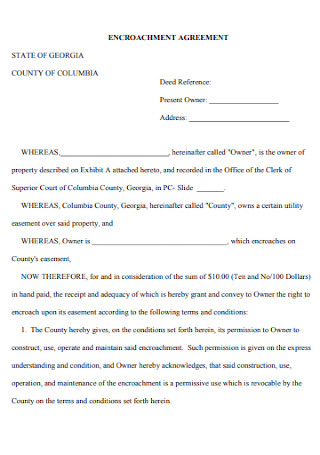
Sample Encroachment Agreement Template
download now -

Easement Encroachment Agreement for Fences
download now -
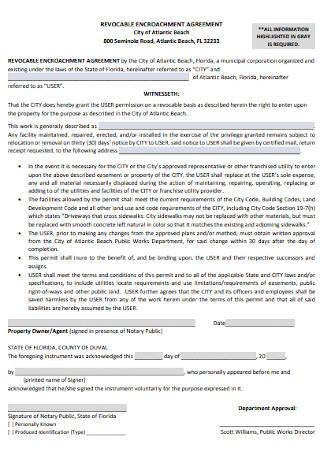
Revocable Encroachment Agreement
download now -

Right-of-Way Encroachment Agreement
download now -

Crossing Encroachment Agreement
download now -
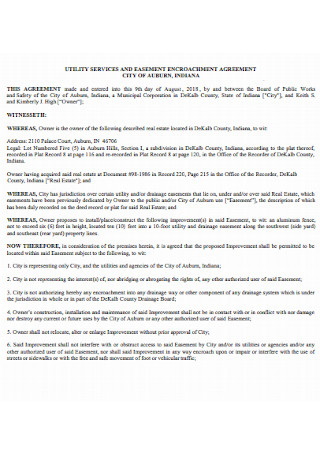
Utility Service Encroachment Agreement
download now -
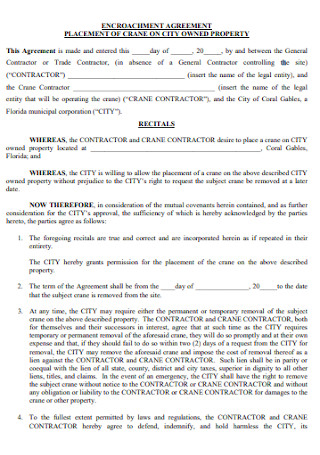
Construction Encroachment Agreement
download now -
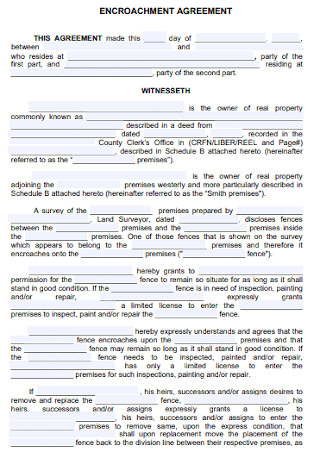
Basic Encroachment Agreement Template
download now -
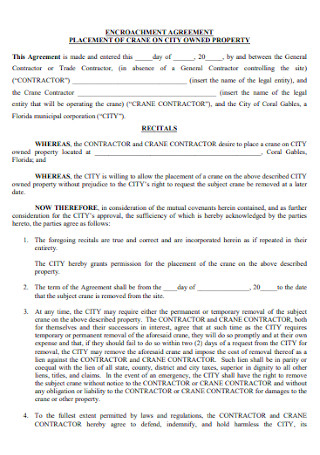
Property Encroachment Agreement
download now -
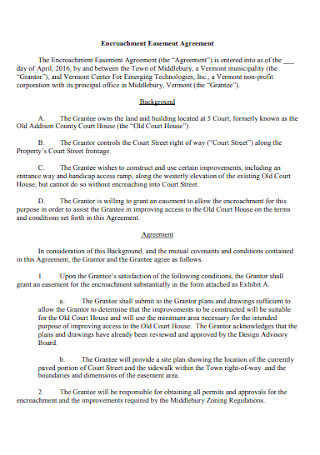
Encroachment Agreement
download now -
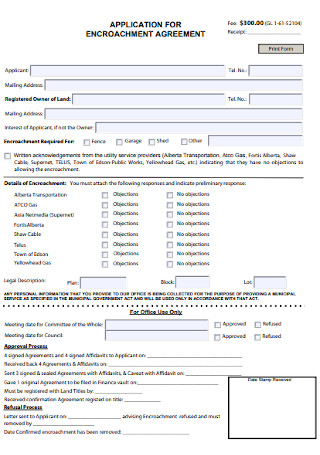
Application for Encroachment Agreement
download now -
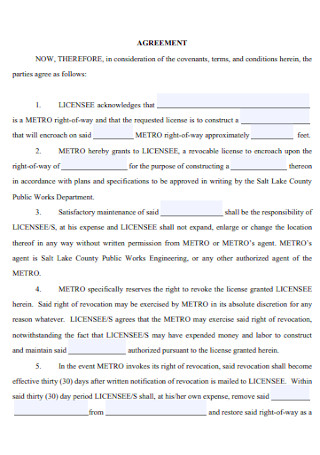
Licence and Encroachment Agreement
download now -

Facility Encroachment Agreement
download now -
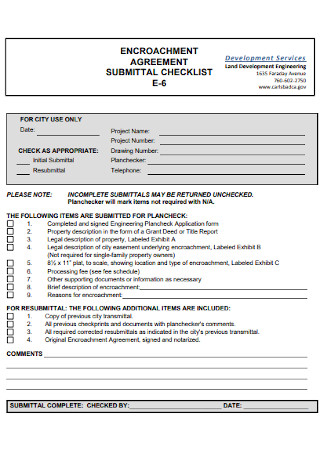
Encroachment Agreement Submittal Checklist
download now -
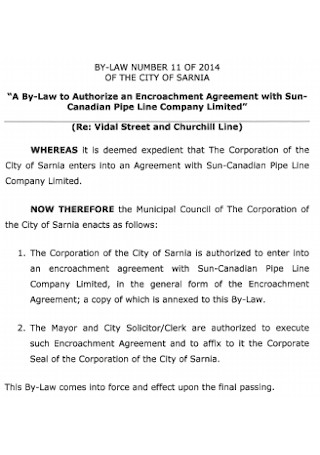
Encroachment Law Agreement
download now -
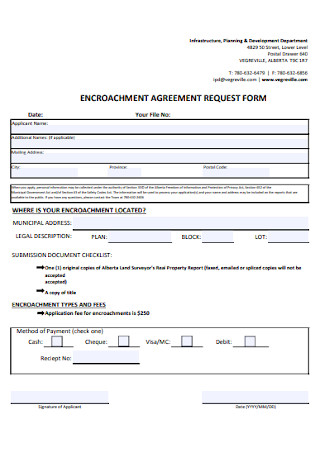
Encroachment Agreement Request Form
download now -
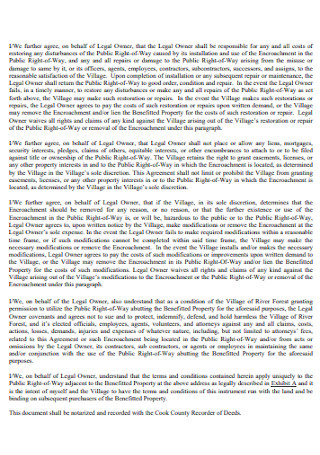
Encroachment Waiver Agreement
download now -
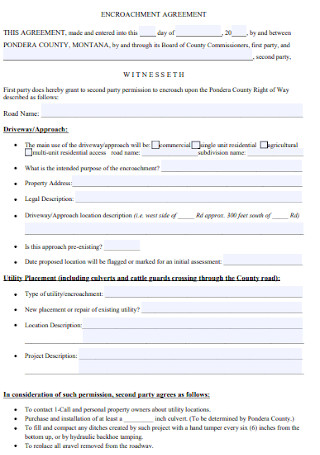
Formal Encroachment Agreement
download now -

Standard Encroachment Agreement Template
download now -
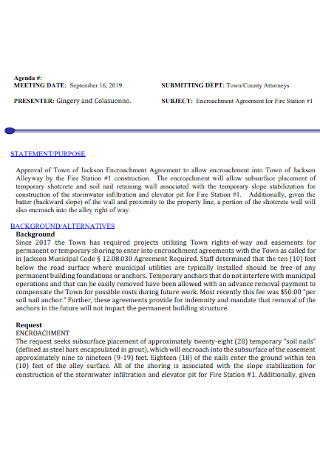
Encroachment Agreement for Fire Station
download now -
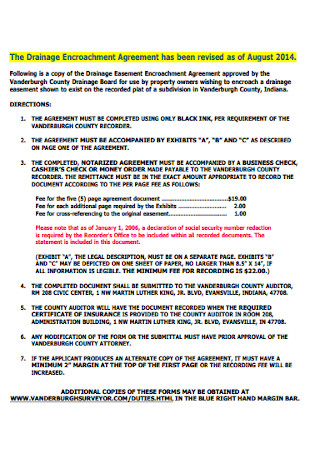
Drainage Encroachment Agreement
download now -
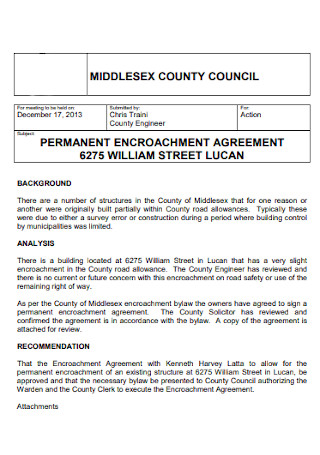
Permanant Encroachment Agreement
download now -
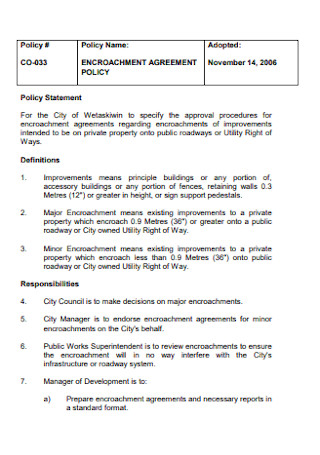
Encroachment Agreement Policy Template
download now -
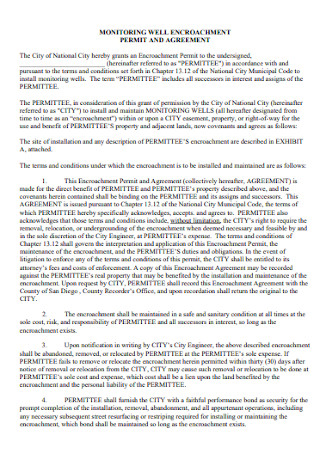
Encroachment Permit Agreement
download now -
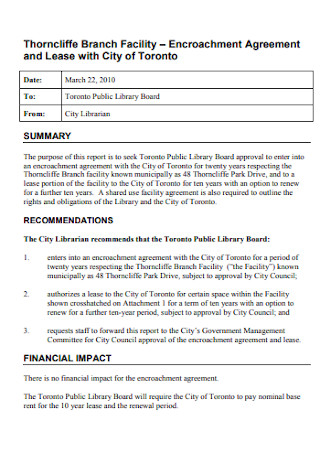
Lease Encroachment Agreement
download now -

Pipeline Crossing and Encroachment Agreement
download now -
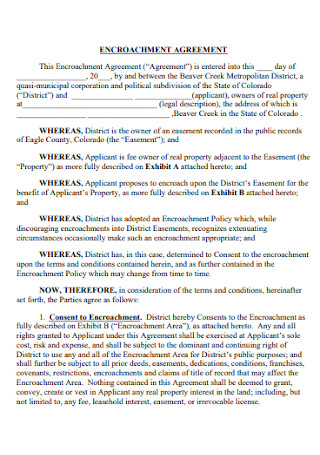
Simple Encroachment Agreement Template
download now -
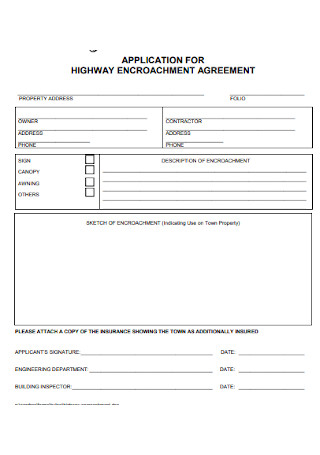
Application for Highway Encroachment Agreement
download now -
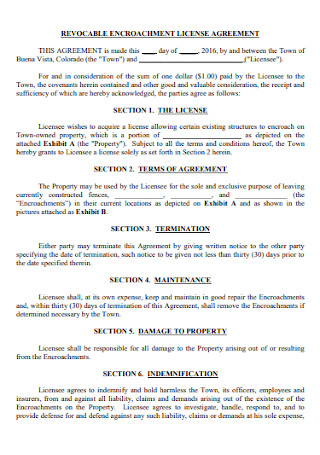
Revocable Encroachment Licence Agreement
download now -
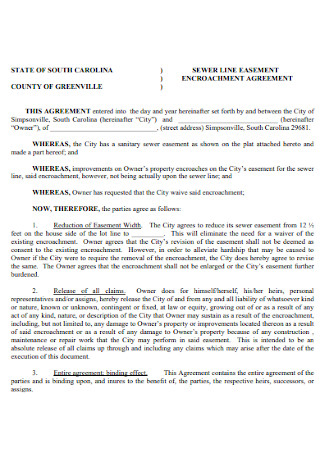
Sewer Line Encroachment Agreement
download now -
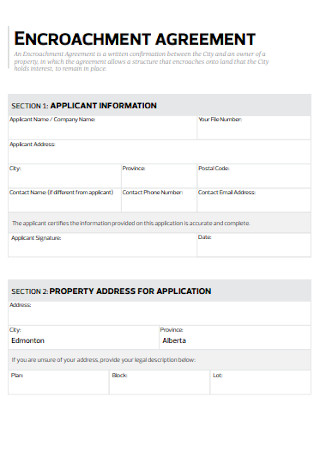
Printable Encroachment Agreement Template
download now
FREE Encroachment Agreement s to Download
30+ Sample Encroachment Agreements
What Is an Encroachment Agreement?
What Are the Three Types of Encroachment?
How to Make an Encroachment Agreement
FAQs
Is an encroachment a good idea?
When should I prepare an encroachment agreement for a property?
What is the difference between encroachment and easement?
What Is an Encroachment Agreement?
An encroachment agreement refers to the official binding agreement used when a property owner builds something that extends or overhangs to another property. With this agreement, permission is granted if the neighbor whose property gets affected doesn’t see the encroachment as a problem. Adjoining landowners is one effective solution since neighbors with common boundaries, duties, rights, or liabilities would easily agree to encroachment. However, encroachment becomes an issue of property lines whenever the person whose land got encroached isn’t aware or doesn’t agree to the structures and improvements built.
According to Statista, water encroachment in poorly planned urban development is part of the leading causes that cause poor rainwater drainage, flooding, and landslides.
What Are the Three Types of Encroachment?
In an encroachment agreement, it is very important to be very detailed and specific about what encroachment is given. That is because some encroachments are not that big of a deal while there are others that can cause major issues. And you will be expected to identify the type of encroachment involved. So in this section, you will learn about the different encroachment types.
How to Make an Encroachment Agreement
Whether you live in Ontario, Texas, North Carolina, or anywhere, there are different laws and regulations attributed to lands and properties. So even if your statement of purpose in encroaching is good, it is unwise to just proceed without an official agreement. Breaking boundaries and property lines might involve disputes. Nonetheless, making the said agreement is not that difficult. Without further ado, here are the steps on how to create an encroachment agreement:
Step 1: Use a Template
There is no need to concern yourself with an agreement written from scratch. You can only insert the important parts and finishing details from premade templates. Check out the different samples of encroachment agreements above for your reference page sheet. Pick, download, and edit a template until you can create the agreement within minutes.
Step 2: Write Down What Is Asked
Like any detailed letter, you shouldn’t be complacent by merely submitting a document from a premade template as it is. You will have to work on writing what is asked or completing what makes the agreement complete. Focus on recognizing your encroachment’s purpose, its type, all the details regarding the encroachment descriptions and dimensions, supporting documents and sketches, and the full information of other existing encroachments that already affected the property of concern.
Step 3: Make the Document as Clear as Possible
Keep your encroachment agreement clear both literally and metaphorically. First, you ensure that the words written there are legible to read. But most importantly, the words should be understood by the public, easy to follow, and would eliminate typical questions regarding the encroachment. Otherwise, unclear agreements may be voided. You can also do that by adding instructions, Timeline charts for presentation, and dividing the details according to clauses.
Step 4: Have It Signed
While most agreements end with a closing statement, ensure that your encroachment agreement also concludes with signatures from every party of concern. This part confirms that all parties concerned are aware of the encroachment plan and they do not disagree with the project at all. Those signatures are extremely important upon submitting an encroachment acknowledgment application (EAL).
FAQs
Is an encroachment a good idea?
An encroachment is good especially when there is permission involved, an agreement, and a good cause in encroaching. Asking for permission and agreeing on terms will help avoid disputes. And most importantly, a proper purpose is essential because there are many projects and structures out there that fail. An example is the water encroachment in a poorly planned urban development, which became a top leading cause of poor water drainage, flooding, and landslides.
When should I prepare an encroachment agreement for a property?
You can already identify the need to prepare an encroachment agreement for a property while buying or selling a property, processing for a building or development permit, or being required by the municipal or city staff.
What is the difference between encroachment and easement?
Encroachment commonly refers to having a neighbor who builds something on a property, whether partially or wholly, and the owner is alright with it. Meanwhile, easement refers to allowing a neighbor to use your property or you use your neighbor’s property. And an easement agreement is made for that action.
Building structures, purchasing homes, and surveying lands will eventually have you concerned with encroachment. Such action lists will not only let you identify a property’s value but also its underlying boundaries and property lines. So the next time you plan to encroach any property, talk with the property owner first and introduce an encroachment agreement. And you come up with that document anytime using our sample encroachment agreement templates.
